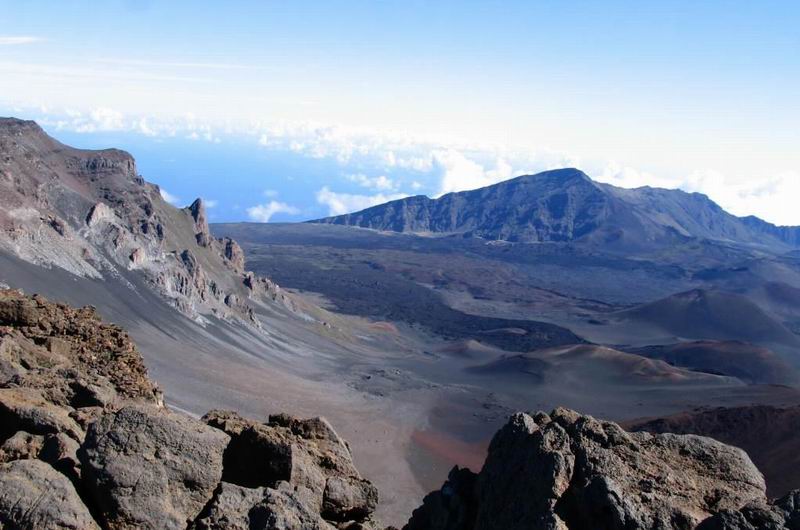
Haleakala National Park across Maui’s eastern and southern shore is the top attraction holding the highest peak of Maui. Soaring as high as up to 10,023 feet, the mount’s lovely slopes have become the landmark as they are visible from anywhere on the island. The word ‘Haleakala’ stands for ‘abode of the sun’ and attributes to the tale in which the demigod Maui lassoed this burning star from the peak of this volcano decelerating the sun’s descent for making the day to last longer.
For the tourists, today, the park is a vast land of natural settings and three separate visitor centers. A majority of them love to travel across the highest peaks by hiking over the clouds or riding the horse across the unearthly deserts. Because of the proximity of the Haleakala National Park near the coast, it also features tropical areas packed with streams as well as waterfalls.

Start your tour early in the morning to drive until the Visitor Center at 9,740 feet from where you get the best view of the sunrise. Especially if the morning is clear, this view from the summit is a memorable experience. Just like this sunrise that never seems to be the same on any two days are the spectacular sunsets as well as the starry night skies explored by camping.
The drive until the peak is very picturesque and offers various overlooks. While you are on this adventure, you will be able to explore the five unique climate zones. And yes, this driving road is known for its record for making one reach the highest altitude in the shortest distance of 38 miles. Once you reach the summit, you enjoy the far away views of the Big Island if the day is clear. However, you need to dress warm as it can be very cold here than in the rest of the island. Did you know that this summit acts as the astronomical base for many scientists? Yes, this is true because of its extremely clear vistas of the night sky. Even if you are amateur, do rent a telescope as well as binocular from a local merchant.
If you do not want to drive the long, meandering road to the peak that needs some time, you can become a more adventurous and pick up one of the hiking trails that feature picturesque scenes as well as perfect solitude. For this, I recommend for taking a guided tour. And while hiking, do enjoy spotting some endangered species such as blooming ahinahina plant (silversword) of 6000 feet and having a life of 50 years as well as the Nene (Hawaiian goose). From the summit, go for any of those two trails that descend into the crater: the Sliding Sands trail or the Halemauu trail. Surprisingly, you can stay in the dormant crater as there are three cabins here for stay, but only via advanced reservations. With a permit, you can tent here too.
Just ensure that before you drive, you have adequate gas as there is no such help/service on the way. In addition, do take food also, and the reason for this is also the same as for the former. This adventure is not recommended for pregnant women or those having respiratory problems because of its high elevation.

Timings
All days, except severe weather closures: Park Headquarters Visitor Center at 7,000 feet: 8:00 am to 4:00 pm, Haleakala Visitor Center from 6:30 am to 3:30 pm, and Kipahulu Visitor Center on the ground from 9:00 am to 5:00 pm.
Admission
$5 to mandatorily buy a recreational use pass valid for 3 days for per person basis who have no car. Children under 15 needs no entrance pass. An entry with a private (noncommercial) vehicle will cost $10 with the validity of 3 days.
Camping
Hosmer Grove and Kipahulu operate all year round, backcountry camping is also on offer. Three wilderness cabins in the Haleakala National Park are reserved by advanced reservation lottery.